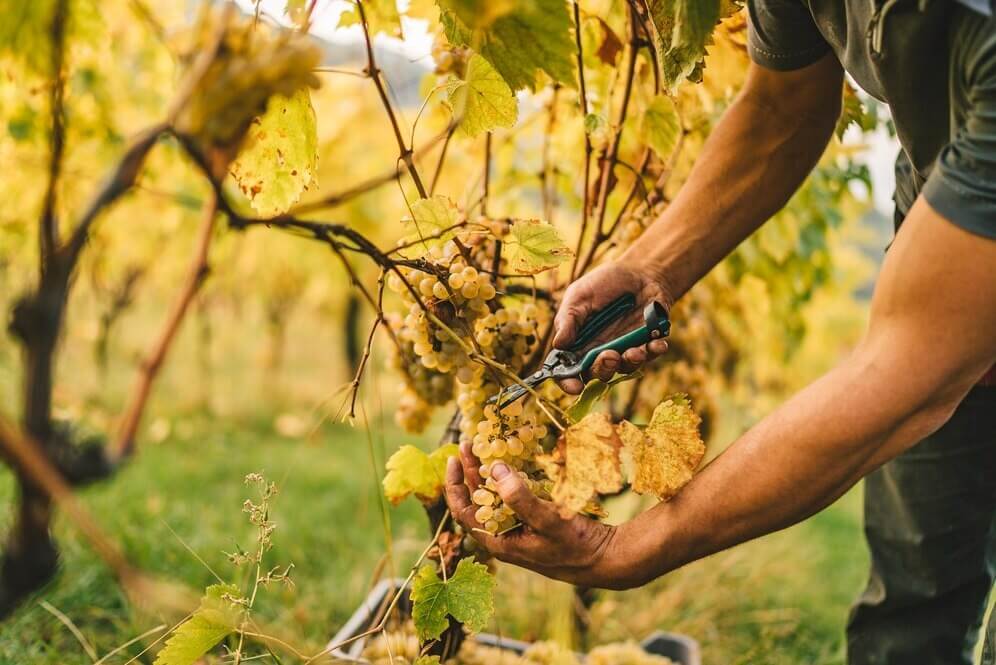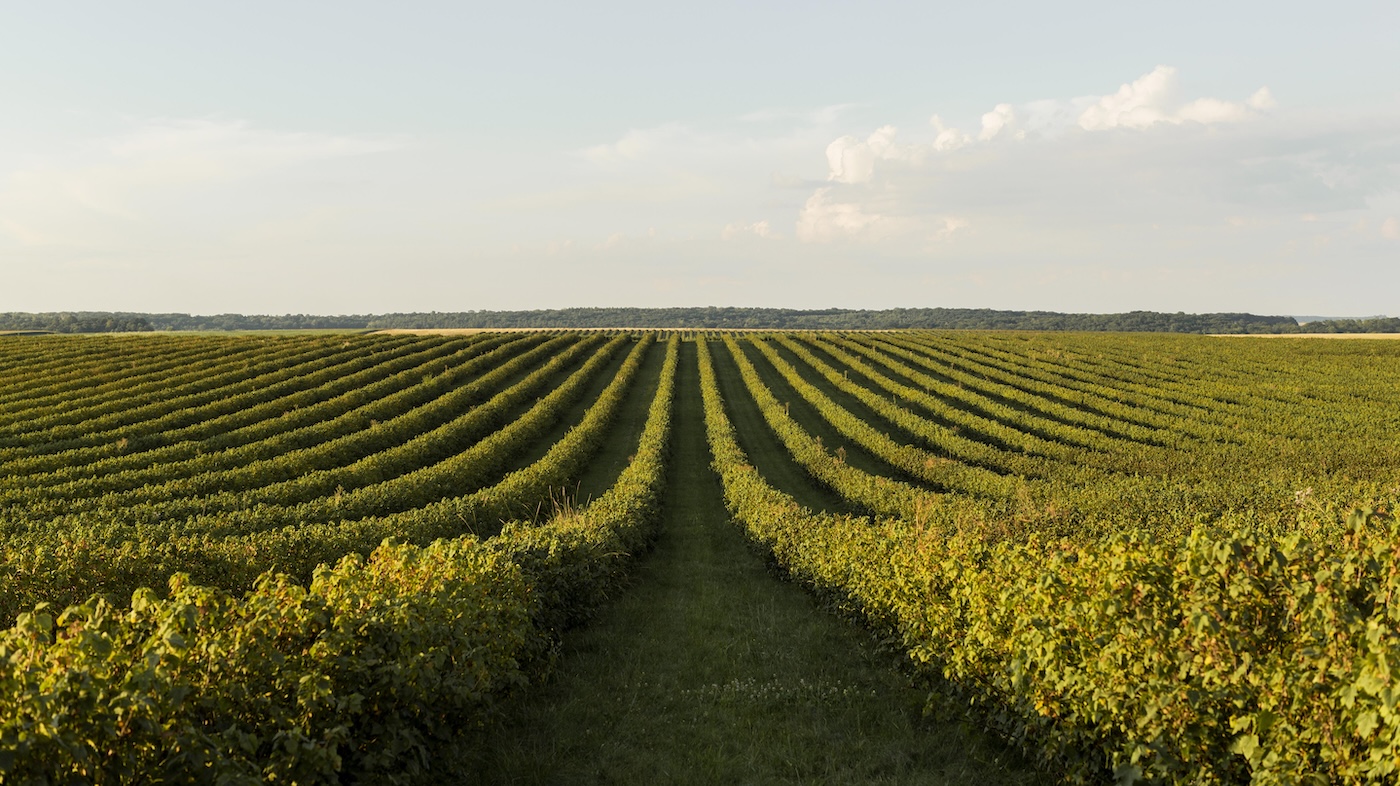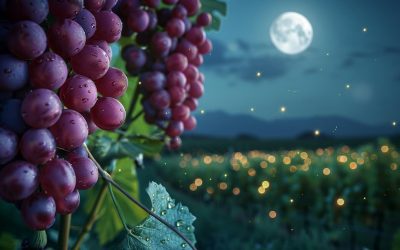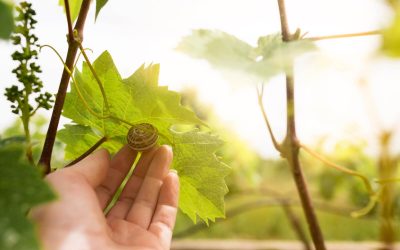Wine is born long before the cellar. It is born in the vineyard, through a regular vegetative cycle, though never identical from one year to the next. Bud break, flowering, fruit set, veraison, ripening… So many “stages that transform a simple plant into a source of” emotion and culture. Understanding these stages means looking at what we taste with a more sensitive eye.

Winter (December to February): Vegetative Rest
During winter, the vine enters its vegetative rest phase, also known as winter dormancy. This period, though seemingly silent, is crucial for the proper progression of the vine cycle. In the absence of sufficient heat and light, the plant ceases all visible activity.
The foliage has fallen, the grapes have been harvested, the canes are bare, and the sap has descended into the roots to protect itself from frost. This rest allows the vine to replenish its reserves after the intense effort of fruiting and ripening. It enters a state of lethargy to protect itself from sometimes extreme temperatures. This process is comparable to hibernation in some animals: everything is paused to better restart in spring.
Paradoxically, cold is beneficial. It helps limit the proliferation of diseases and harmful insects by destroying their eggs and spores. A harsh winter can therefore prove healthy for the vine.

Spring (March to may): Bud Break and Flowering
With the return of warmer days, the vine emerges from its winter dormancy. When temperatures consistently exceed 10°C, an impressive phenomenon announces the resumption of the cycle: weeping. At the end of winter, the sap, drawn by the warmth, rises from the roots to the ends of the pruned canes. This liquid flows from the cuts: the vine seems to weep. This natural phenomenon is the first visible sign of renewed activity.
A few days after weeping, the buds swell, then open: this is bud break. Young, tender green shoots, called unfolded leaves, appear. They will give rise to shoots, mature leaves, and future inflorescences.
Bud break is one of the most critical moments of the year. The young shoots are extremely sensitive to spring frosts, which can wipe out an entire harvest in a few hours.

Flowering (Late may to Early June)
If the climate remains favorable, the vine continues its growth and enters the flowering phase. Tiny, discreet white flowers form at the end of the young shoots. These are what will give rise to the berries (future grape clusters) if they are well fertilized.
Flowering largely depends on weather conditions:
- 🌞 Dry, warm, and low-wind weather is ideal.
- 🌧️ An episode of rain or cold can cause coulure: the flowers abort and do not transform into fruit.
- 🌪️ Wind can hinder pollination, which, let’s remember, is autogamous in vines (the flower self-fertilizes).
Spring is the season of vegetative revival. Everything hinges on this moment: harmonious bud break and successful flowering determine the quantity and quality of future grape clusters.


Summer (June to August): Growth and Concentration
Summer is a period of full physiological activity for the vine. After flowering, if fertilization has been successful, the flowers give rise to small green berries: this is the beginning of a slow and spectacular transformation.
Fruit Set (Late June / Early July)
Fruit set refers to the transformation of fertilized flowers into young fruits. The grape berries form in place of the flowers and begin their growth. At this stage, the berries are still small, green, and hard, rich in acids and without sugars. This phase is crucial: it determines the number and volume of future grapes. Any stress (climatic, sanitary, or hydric) can disrupt fruit set and lead to coulure or millerandage (small, seedless berries).
Veraison (Mid-July to August)
Towards mid-summer, the grapes begin a gradual change in color:
- Red grape varieties change from green to pink, then to dark purple.
- White grape varieties turn from green to golden yellow.
This phenomenon is called veraison. It is also the beginning of ripening:
- Sugar content increases,
- Acids decrease,
- Varietal-specific aromas develop,
- Phenolic compounds (tannins, anthocyanins) accumulate in the skin.
Veraison does not occur uniformly: it can spread over several days or weeks depending on the grape varieties, exposures, and climatic conditions.
Autumn (September to November): Ripening and Harvest
During this period, winemakers closely monitor the evolution of the berries, because the timing of the harvest directly determines the style and quality of the final wine. It’s not just about picking ripe grapes, but about choosing the optimal moment to achieve the desired profile — whether it’s a dry wine, a sweet wine, a sparkling wine, or a wine for aging.
For this, several analytical and sensory criteria are evaluated:
- Varietal aromas: their expression provides clues about the typicity of the grape variety and the complexity of the future wine. The berries are regularly tasted to evaluate their aromatic finesse and richness.
- Sugar content: measured in grams per liter, it allows for estimating the potential alcoholic degree of the wine.
- Total acidity and pH: acidity that is too low results in a flat wine, while acidity that is too high results in a harsh wine; balance is therefore essential.
- Phenolic maturity: this concerns tannins (present in the seeds, skin, and stems) and anthocyanins (responsible for color in reds). They must be ripe, supple, and non-astringent.

After the harvest, the vine enters pre-dormancy. The leaves fall, the sap descends, and the cycle begins again.






